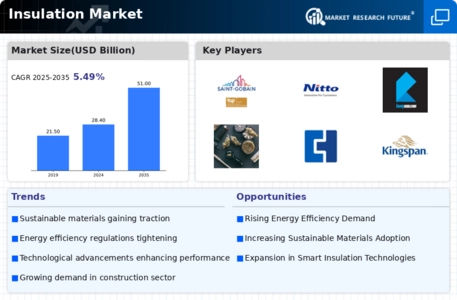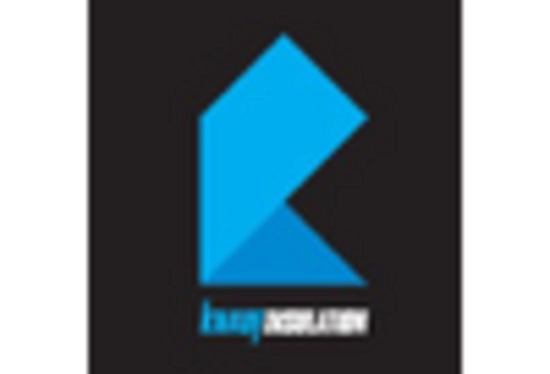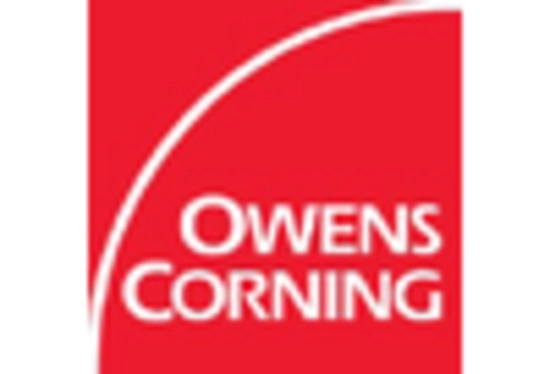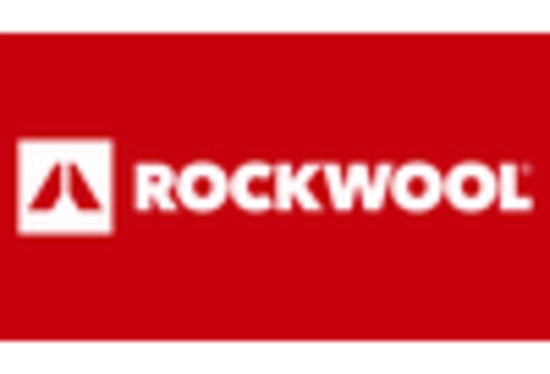Market Trends
Introduction
As we enter 2024, the insulation market is poised for significant transformation driven by a confluence of macro factors. Technological advancements are enhancing the efficiency and effectiveness of insulation materials, while regulatory pressures aimed at reducing carbon footprints are compelling manufacturers to innovate and adopt sustainable practices. Additionally, shifts in consumer behavior, with an increasing emphasis on energy efficiency and environmental responsibility, are reshaping demand dynamics. These trends are strategically important for stakeholders, as they not only influence product development and market positioning but also dictate compliance strategies and investment priorities in an increasingly competitive landscape.
Top Trends
-
Sustainability and Eco-Friendly Materials
The insulation market is increasingly shifting towards sustainable materials, driven by regulations like the EU's Green Deal. Companies are investing in bio-based and recycled insulation products, with a reported 30% increase in demand for such materials. This trend not only meets consumer preferences but also aligns with corporate sustainability goals, potentially reducing carbon footprints significantly. -
Smart Insulation Technologies
Advancements in smart insulation technologies are gaining traction, with products that adapt to temperature changes. Industry leaders are integrating IoT capabilities, enhancing energy efficiency by up to 20%. This trend is expected to revolutionize building management systems, leading to lower operational costs and improved occupant comfort in commercial buildings. -
Regulatory Compliance and Energy Efficiency Standards
Stricter energy efficiency regulations are shaping the insulation market, with countries like Canada implementing the Energy Efficiency Regulations. Compliance with these standards is pushing manufacturers to innovate, resulting in a 15% increase in high-performance insulation products. This trend is likely to drive operational changes and increase R&D investments in the sector. -
Increased Focus on Acoustic Insulation
The demand for acoustic insulation is rising, particularly in urban areas, as noise pollution becomes a significant concern. Reports indicate a 25% growth in the acoustic insulation segment, driven by residential and commercial construction. This trend is prompting manufacturers to develop specialized products, enhancing market competitiveness and diversifying product lines. -
Growth in Industrial Insulation Applications
Industrial insulation applications are expanding, particularly in the oil and gas sector, where thermal efficiency is critical. Companies are reporting a 20% increase in demand for high-temperature insulation materials. This trend is influencing supply chain strategies and prompting investments in specialized manufacturing processes to meet industry-specific needs. -
Integration of Renewable Energy Solutions
The integration of insulation with renewable energy solutions, such as solar panels, is becoming more prevalent. Industry leaders are collaborating to create systems that enhance energy efficiency, with studies showing a 10% increase in overall energy savings. This trend is likely to drive innovation and create new market opportunities in the insulation sector. -
Expansion of Prefabricated Insulation Systems
Prefabricated insulation systems are gaining popularity due to their efficiency and reduced installation time. Reports indicate a 15% increase in the adoption of these systems in construction projects. This trend is reshaping operational workflows and encouraging manufacturers to streamline production processes to meet rising demand. -
Enhanced Fire-Resistant Insulation Products
The need for fire-resistant insulation products is increasing, particularly in commercial buildings, following stricter fire safety regulations. The market for these products has seen a 20% growth, driven by safety concerns and insurance requirements. This trend is prompting manufacturers to innovate and develop new materials that meet evolving safety standards. -
Digitalization and Automation in Manufacturing
Digitalization and automation are transforming insulation manufacturing processes, leading to increased efficiency and reduced costs. Companies are investing in smart manufacturing technologies, with reports indicating a 30% improvement in production efficiency. This trend is expected to enhance competitiveness and drive operational excellence in the insulation market. -
Rising Demand for Insulation in Emerging Markets
Emerging markets are witnessing a surge in insulation demand, driven by rapid urbanization and infrastructure development. Countries in Asia-Pacific are experiencing a 25% increase in insulation consumption. This trend is prompting global manufacturers to expand their presence in these regions, creating new growth opportunities and market dynamics.
Conclusion: Navigating the Insulation Market Landscape
The insulation market in 2024 is characterized by intense competitive dynamics and significant fragmentation, with both legacy and emerging players vying for market share. Regional trends indicate a growing emphasis on sustainability and energy efficiency, prompting vendors to innovate their product offerings. Legacy players are leveraging established brand equity and distribution networks, while emerging companies are focusing on advanced capabilities such as AI-driven solutions, automation in manufacturing, and flexible product designs to meet diverse consumer needs. As the market evolves, the ability to integrate sustainability into product development and operational processes will be crucial for leadership. Vendors that prioritize these capabilities will not only enhance their competitive positioning but also align with the increasing regulatory and consumer demand for environmentally responsible solutions.

















Leave a Comment